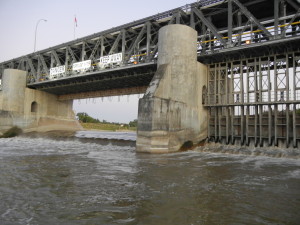Red River
Red River of The North
The 885 km long Red River flows north across the old lake bed of ancient glacial Lake Agassiz which drained, about 9,500 years ago. The Red River begins between Wahpeton, North Dakota and Breckenridge, Minnesota slowly but surely meandering north into Manitoba where it eventually drains into Lake Winnipeg.
The mud, silt, clay and sometimes rocky bottom of the Red River is a perfect home for channel cats. To the casual observer the seemingly featureless slow meandering Red does not look too exciting but the unseen structure gives anglers an abundance of opportunities to catch channel cats. Channel edges, holes, flats, and current edges are all great locations to start your search for channel cats.
The River Channel

